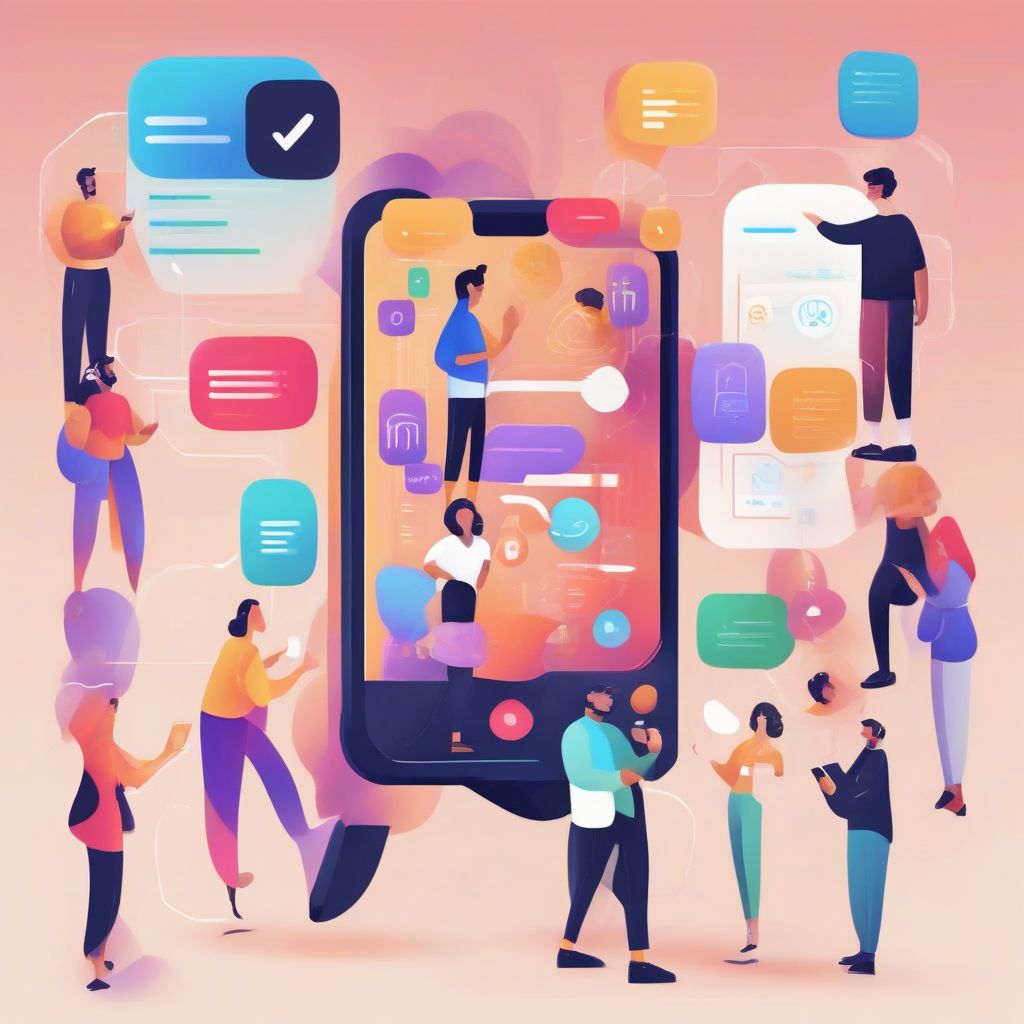Ever dreamt of crafting a mobile app so captivating that it feels tailor-made for each user? That’s the power of designing for user personas.
Gone are the days of one-size-fits-all apps. In today’s competitive mobile landscape, understanding your user personas is no longer a luxury—it’s a necessity. It’s about stepping into the shoes of your target audience, understanding their motivations, frustrations, and goals, and then crafting an app experience that resonates deeply with them.
Why User Personas are Crucial for Mobile App Design
Let’s dive into why user personas are the bedrock of a successful mobile app:
1. Laser-Focused Design Decisions: User personas provide clarity. They help you prioritize features, tailor navigation, and even choose the right color palette—all based on what resonates most with your target audience. Imagine you’re designing a fitness app. A persona representing a busy professional might prioritize quick, time-efficient workouts, while a retiree might seek community features and low-impact exercises. Personas ensure you cater to these distinct needs.
2. Enhanced User Experience (UX): By understanding user behaviors and preferences, you can create intuitive, enjoyable, and engaging experiences. For instance, if your persona reveals a preference for visual learning, incorporating more videos and infographics into your app could be a game-changer.
3. Increased User Engagement and Retention: When an app feels personally relevant, users are more likely to stick around. By addressing the specific pain points and aspirations of your target audience through thoughtful design, you foster a stronger emotional connection, leading to higher engagement and retention rates.
4. Streamlined Development Process: Personas prevent costly redesigns and feature creep. By defining your target audience upfront, you ensure everyone is aligned on who you’re designing for, leading to a more efficient and focused development process.
 User Personas in Mobile App Design
User Personas in Mobile App Design
Creating Effective User Personas: A Step-by-Step Guide
Now that you understand the “why,” let’s explore the “how.” Here’s a step-by-step guide to creating user personas that drive results:
1. Gather Data: Start with research. Conduct user interviews, analyze app analytics, and delve into market research to gather insights about your target audience. Look for patterns in demographics, behaviors, goals, pain points, and motivations.
2. Identify Key Persona Groups: Segment your audience based on shared characteristics. Aim for 3-5 key personas that represent the majority of your user base. Remember, it’s better to have a few well-defined personas than numerous superficial ones.
3. Develop Detailed Persona Profiles: Give your personas names, ages, occupations, and even photos to make them relatable. Outline their goals, frustrations, motivations, preferred technology, and any other relevant information that brings them to life.
Example Persona:
Name: Emily Carter
Age: 32
Occupation: Marketing Manager
Goal: Eat healthier and lose weight despite a busy schedule.
Frustration: Finding healthy recipes that are quick and easy to make.
Motivation: Wants to have more energy and feel confident in her clothes.
4. Create Scenarios and User Journeys: Imagine how each persona would interact with your app. What tasks would they perform? What challenges might they encounter? Mapping out user journeys for each persona helps identify potential pain points and opportunities for optimization.
5. Share and Integrate: Distribute your personas across your team—from designers and developers to marketers and stakeholders. Ensure everyone understands who they are designing and building for.
Designing with User Personas in Mind: Best Practices
Here are some practical tips for applying user persona insights to your mobile app design:
- Personalization: Offer personalized experiences based on user preferences. For instance, a news app could prioritize content categories based on a user’s interests.
- Intuitive Navigation: Design navigation that aligns with the mental models of your users. Use clear labels, familiar icons, and logical information architecture.
- Accessibility: Consider the needs of users with disabilities. Ensure text is legible, color contrast is sufficient, and alternative navigation options are available.
- Microinteractions: Incorporate subtle animations and feedback mechanisms to make the app feel responsive and engaging. For example, a button could change color upon being pressed to provide visual confirmation.
- Testing and Iteration: Regularly test your app with real users from your target persona groups. Gather feedback and iterate on your design based on their input.
Real-World Examples of User Persona-Driven Design
Many successful mobile apps attribute their success to a user-centric approach.
-
Duolingo: The language learning app uses personas to personalize lessons and feedback, making the learning process engaging and effective.
-
Airbnb: By understanding the needs and motivations of both travelers and hosts, Airbnb creates a seamless experience for booking unique accommodations.
Conclusion: Designing for Humans, Not Users
Designing for user personas isn’t about ticking boxes; it’s about connecting with the humans behind the screens. It’s about understanding their needs, aspirations, and behaviors to craft mobile app experiences that are not just functional but also enjoyable, engaging, and ultimately successful. By putting your users at the heart of your design process, you’ll create an app that resonates, engages, and delights—an app that truly stands out in the crowded mobile landscape.
[amazon bestseller=”mobile app design”]
